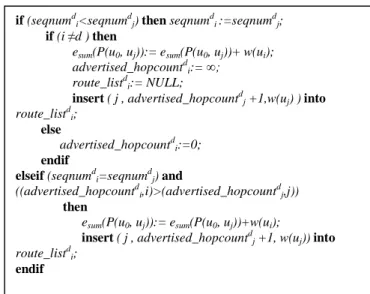A multipath energy-conserving routing protocol for wireless ad hoc networks lifetime improvement
Texte intégral
Figure




Documents relatifs
The observational congruence allows us to verify whether two networks exhibit the same observable probabilistic behaviour (connectivity), while the preorder is used to compare
Key-words: energy efficiency, node activity scheduling, network lifetime, sleeping node, spatial reuse, coloring algorithm, slot assignment, wireless ad hoc networks, sensor
Under all mobility scenarios, standard energy deviation of consumed energy per node in MEA-DSR-nWT is always lower than that of DSR, which confirms the efficiency of
For lower mobility scenarios, although DSR generates less overhead but it does not present an important improvement in energy consumption because it tends to use longer routes
We establish three types of keys for each sensor node according to each type of communication patterns: an individual key shared with the base station, a cluster key shared
The recent identification of the YUCCA (YUC) family of auxin biosynthetic genes encod- ing flavin monooxygenases regulating the TAM pathway has been instrumental in demonstrating
Les lettres minuscules différentes indiquent les différences statistiquement significatives entre les dates et les majuscules les différences statistiquement significatives entre